-
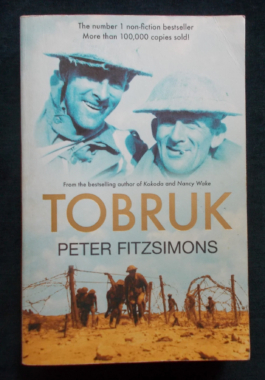
Tobruk: Peter Fitzsimons
$15.00In the dark heart of World War II, when Hitler turned his attentions to conquering North Africa, a distracted and far-flung Allied force could not give its all to the defence of the key city of Tobruk in Libya. So the job was left to the roughest, toughest bunch they could muster. Tobruk is the story of an incredible battle in excruciating desert heat through nine long months, against the might of Adolf Hitler's formidable Afrika Korps. This force's defence of Tobruk against the Afrika Korps' armoured division is one of the great battles of all time, yet rarely talked about. Drawing on extensive source material - including diaries and letters, some never published before - this extraordinary book is the definitive account of this remarkable battle. With black and white photographs. -
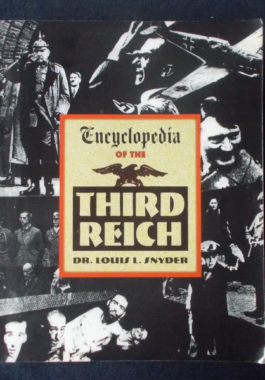 Regarded as a definitive selection of historical information covering all the important people of the time (Resistance members and Nazis); military operations; concepts; organisations of the era as well as those regarded as having been influential to the Nazi ideology. There is a chronology of every important date in the history of the Third Reich from the fall of the Weimar Republic to the end of World War II; a bibliography of pertinent books and articles; essays on art, architecture, film, theater, music, sports, religion, and education; documents such as Hitler's Last Will and his Political Testament and over 200 period photos and drawings.
Regarded as a definitive selection of historical information covering all the important people of the time (Resistance members and Nazis); military operations; concepts; organisations of the era as well as those regarded as having been influential to the Nazi ideology. There is a chronology of every important date in the history of the Third Reich from the fall of the Weimar Republic to the end of World War II; a bibliography of pertinent books and articles; essays on art, architecture, film, theater, music, sports, religion, and education; documents such as Hitler's Last Will and his Political Testament and over 200 period photos and drawings. -

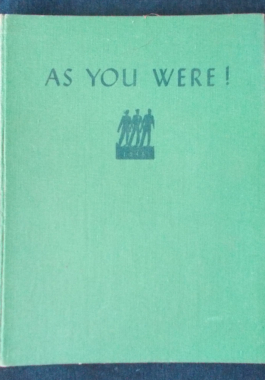 A Cavalcade of Events with The Australian Services from 1788 to 1946. Articles and notes; art and jokes; poetry and cartoons... from the servicemen - and even some of the women - who were there. This is no dry history of battles and dates - it's a memorial to all those fallen in war. Just some of the items in this volume: The Blood-bath at Cowra, E.V. Timms; When Sydney Fought A Zeppelin, 'Matelot'; Bless 'Em All, Biddy Moriarty (Australian Red Cross); Stout Hearts That Never Failed, Ion Idriess; A Service Girl In Japan, A.J. Poppins; and much more, together with art and photographs in black and white and colour - and of course, some typical Australian irreverent cartoons.
A Cavalcade of Events with The Australian Services from 1788 to 1946. Articles and notes; art and jokes; poetry and cartoons... from the servicemen - and even some of the women - who were there. This is no dry history of battles and dates - it's a memorial to all those fallen in war. Just some of the items in this volume: The Blood-bath at Cowra, E.V. Timms; When Sydney Fought A Zeppelin, 'Matelot'; Bless 'Em All, Biddy Moriarty (Australian Red Cross); Stout Hearts That Never Failed, Ion Idriess; A Service Girl In Japan, A.J. Poppins; and much more, together with art and photographs in black and white and colour - and of course, some typical Australian irreverent cartoons. -
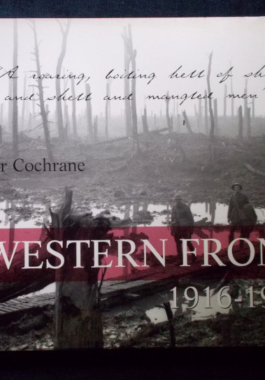 A fascinating, unsettling and unforgettable view of one of the most compelling events in modern history. For all the significance attached to the doomed heroism at Gallipoli, the Western Front was the single greatest wartime tragedy that elicited the greatest sacrifice. Of the 61,720 who died in the course of the war, 46,319 were lost at the Western Front. In a matter of weeks, more Australians were slain in or or two battles than in the entire eight months at Gallipoli. Those terrible years, 1916 to 1918, represent the whole panoply of modern warfare. This is an examination of the record of official and unofficial images in unexpected ways. It looks at the major battles of the campaign, the grim conditions endured by the soldiers, the workers of the massive support system, the valiant efforts of stretcher-bearers and medical workers and, finally, the run of victories under Monash in which Australian soldiers distinguished themselves above and beyond their numerical presence. Illustrated with black and white photographs.
A fascinating, unsettling and unforgettable view of one of the most compelling events in modern history. For all the significance attached to the doomed heroism at Gallipoli, the Western Front was the single greatest wartime tragedy that elicited the greatest sacrifice. Of the 61,720 who died in the course of the war, 46,319 were lost at the Western Front. In a matter of weeks, more Australians were slain in or or two battles than in the entire eight months at Gallipoli. Those terrible years, 1916 to 1918, represent the whole panoply of modern warfare. This is an examination of the record of official and unofficial images in unexpected ways. It looks at the major battles of the campaign, the grim conditions endured by the soldiers, the workers of the massive support system, the valiant efforts of stretcher-bearers and medical workers and, finally, the run of victories under Monash in which Australian soldiers distinguished themselves above and beyond their numerical presence. Illustrated with black and white photographs. -
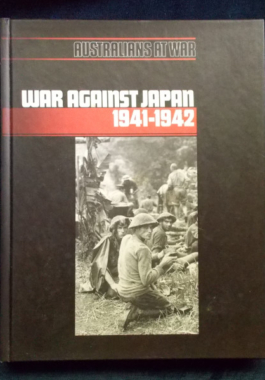 Time-Life series Australians At War, Volume 1. In South East Asia the European colonists lived an indolent life while to the north, the Japanese marched hungrily to war. In Singapore and up-country Malaya, there was still time for socialising and for serving officers to deck themselves out in their mess-dress finery for balls and dances, and for their wives to enjoy all the comforts that colonial service and a strong pound sterling could bring. Garrison life was an endless round of parties, parades and presentations at Government House. But with the splendour, there was a blind refusal in London and the Far East to see just how expansionist and bellicose the Japanese really were. Lavishly illustrated with archival black and white photographs and colour reproductions of contempory art.
Time-Life series Australians At War, Volume 1. In South East Asia the European colonists lived an indolent life while to the north, the Japanese marched hungrily to war. In Singapore and up-country Malaya, there was still time for socialising and for serving officers to deck themselves out in their mess-dress finery for balls and dances, and for their wives to enjoy all the comforts that colonial service and a strong pound sterling could bring. Garrison life was an endless round of parties, parades and presentations at Government House. But with the splendour, there was a blind refusal in London and the Far East to see just how expansionist and bellicose the Japanese really were. Lavishly illustrated with archival black and white photographs and colour reproductions of contempory art. -
 Published by the Dachau Museum, this book serves as a reminder of the victims of the Holocaust. It contains reproductions of official documents, anti-Semitic propoganda, photos of the camps, the prisoners and their few possessions that we callously stolen from them; letters of condolence from Camp Commandants to grieving widows, records of military personnel and so much more.
Published by the Dachau Museum, this book serves as a reminder of the victims of the Holocaust. It contains reproductions of official documents, anti-Semitic propoganda, photos of the camps, the prisoners and their few possessions that we callously stolen from them; letters of condolence from Camp Commandants to grieving widows, records of military personnel and so much more. -
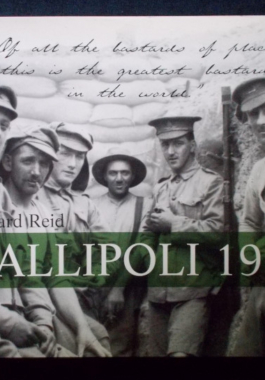
Gallipoli 1915: Richard Reid
$15.00A new look at the old legend of Anzac - an account of how ordinary blokes from many different countries coped in extraordinary circumstances not only in battle but back in the trenches. These men, whose fingers were too frozen to pull the trigger, buried their best mates, slept in holes in the ground and struggled with lice infested clothes. This book presents a remarkable and absorbing series of photographs from Australia's major archival collections, many previously unseen. These images often taken by the soldiers themselves, combined with illustrations created for the newspapers, were the images responsible for creating the public memory of Gallipoli back in Australia. The commentary of historian, Dr Richard Reid of the Department of Veterans' Affairs, together with moving extracts from soldiers letters and diaries, along with the official dispatches of war correspondents present at Gallipoli, paint an unforgettable record of the sacrifices, courage and determination embodied in the Anzac legend. -
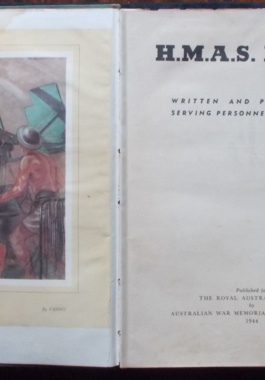
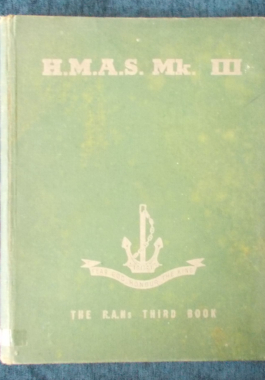
Published for the Royal Australian Navy buy the Australian War Memorial, Canberra in 1944. A book chockful of fabulous artwork, sketches, photographs, poems, writings and memoirs of the serving personnel of the Royal Australian Navy and their service in World War II - the men who were there as it all happened. A must for any real war buff. Illustrated in black and white and colour.
-
 Who is Captain Sir Tom Moore? You've seen him on the television walking the length of his garden. A frail elderly man, doing his bit at a time of crisis. But he wasn't always like this. From a childhood in the foothills of the Yorkshire Dales, Tom Moore grew up in a loving family, which wasn't without its share of tragedy. It was a time of plenty and of want. When the storm clouds of the Second World War threatened, he raised his hand and like many of his generation, joined up to fight. His war would take him from a country he had never left to a place which would steal his heart, India and the Far East, to which he would return many years later to view the sight he had missed first time around: the distant peak of Everest. Captain Tom's story is our story. It is the story of our past hundred years here in Britain. It's a time which has seen so much change, yet when so much has stayed the same: the national spirit, the can-do attitude, the belief in doing your best for others. Illustrated with photographs.
Who is Captain Sir Tom Moore? You've seen him on the television walking the length of his garden. A frail elderly man, doing his bit at a time of crisis. But he wasn't always like this. From a childhood in the foothills of the Yorkshire Dales, Tom Moore grew up in a loving family, which wasn't without its share of tragedy. It was a time of plenty and of want. When the storm clouds of the Second World War threatened, he raised his hand and like many of his generation, joined up to fight. His war would take him from a country he had never left to a place which would steal his heart, India and the Far East, to which he would return many years later to view the sight he had missed first time around: the distant peak of Everest. Captain Tom's story is our story. It is the story of our past hundred years here in Britain. It's a time which has seen so much change, yet when so much has stayed the same: the national spirit, the can-do attitude, the belief in doing your best for others. Illustrated with photographs. -
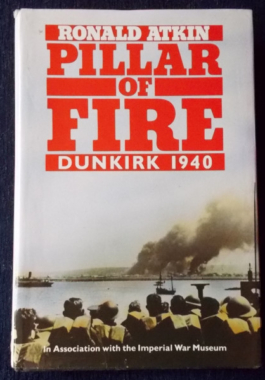
Pillar Of Fire: Ronald Atkin
$15.00In the space of three and a half weeks during May and June of 1940, Nazi Germany came perilously close to winning the war a scant ten months after it started. The British Expeditionary Force and the French and Belgian allies were cut off in the North and driven to the very sands of the Channel and the ruins of Dunkirk, the lone port still in the hands of the B.E.F. Britain faced catastrophe. How that catastrophe was averted through a combination of enemy blunders and British resourcefulness is told here in an account that exposes the 'miracle' of Dunkirk. Here is the true story, chronicled through diaries, memoirs and personal reminiscences of the hundreds of men who lived through those weeks; COs, foot soldiers, generals and privates. Very in-depth.
-
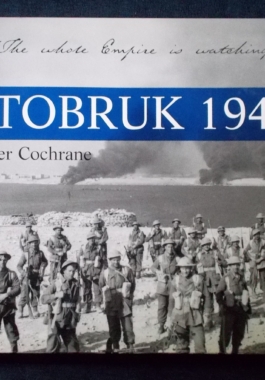
Tobruk 1941: Peter Cochrane
$15.00No surrender...no retreat. When the 9th Division of the AIF withdrew into the desert fortress town of Tobruk in April 1941, a siege began that would make its mark on the course of World War II and the popular memory of a nation. The siege was intended to last no longer than two months, but ultimately extended to eight. Under the command of Morshead, the Allied troops employed an aggressive, daring defence that put a sizeable dent ion Rommel's aura of invincibility. The defiant Aussie diggers distinguished themselves through their determination and unquenchable cheerful spirit. The success of the Rats of Tobruk inspired hope for the possibility of effective resistance in the midst of the darkest days of the war. Illustrated with archival black and white photographs. -
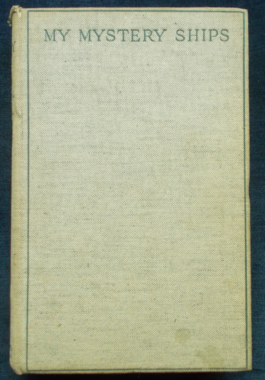 World War I saw a significant and tragic change to the prosecution of war. Allied passenger and merchant ships were blatantly attacked by the enemy, resulting in dreadful civilian losses. The mystery ships were then created - they were disguised as peaceful merchant ships, but which were equipped with guns hidden until a few seconds before opening fire on enemy submarines. They cruised on the trade routes, hoping to encounter enemy submarines and attract them to attack, and when the submarine came to the surface, bombard her with heavy armament. The guns had to be accurate, necessitating rigid drill and discipline - one officer or man making an error would give the show away and risk the ship and crew. This book, first published in 1928, is the first to tell the real story of life on board and the stories of attacks on and by submarines as well as describing the life on board - the discomforts, difficulties and dangers of this method of fighting back. There was also an explanation of the attraction this form of service has for men who were independent and courageous with a strict sense of moral duty. The crew were constantly on alert: one false step could lead to the ship being torpedoed, with those left to try and save themselves or being taken prisoner; discipline and readiness for immediate action were strict from the moment of leaving harbour until safe within the harbour on return. Campbell served on the mystery ships from 2015 to 2017, beginning as a Lieutenant-Commander R.N., and ending that part of his naval career as a Captain R.N. with a V.C. and three D.S.O.s. A little-known and over-looked part of war history. With illustrations by Lieutenant J.E. Broome, R.N.
World War I saw a significant and tragic change to the prosecution of war. Allied passenger and merchant ships were blatantly attacked by the enemy, resulting in dreadful civilian losses. The mystery ships were then created - they were disguised as peaceful merchant ships, but which were equipped with guns hidden until a few seconds before opening fire on enemy submarines. They cruised on the trade routes, hoping to encounter enemy submarines and attract them to attack, and when the submarine came to the surface, bombard her with heavy armament. The guns had to be accurate, necessitating rigid drill and discipline - one officer or man making an error would give the show away and risk the ship and crew. This book, first published in 1928, is the first to tell the real story of life on board and the stories of attacks on and by submarines as well as describing the life on board - the discomforts, difficulties and dangers of this method of fighting back. There was also an explanation of the attraction this form of service has for men who were independent and courageous with a strict sense of moral duty. The crew were constantly on alert: one false step could lead to the ship being torpedoed, with those left to try and save themselves or being taken prisoner; discipline and readiness for immediate action were strict from the moment of leaving harbour until safe within the harbour on return. Campbell served on the mystery ships from 2015 to 2017, beginning as a Lieutenant-Commander R.N., and ending that part of his naval career as a Captain R.N. with a V.C. and three D.S.O.s. A little-known and over-looked part of war history. With illustrations by Lieutenant J.E. Broome, R.N. -
 To many people the most glamorous of aeroplanes is the fighter, by the idea of men flying alone high above the earth in the open cockpit of First World War aircraft, as they fought the gaily-coloured Fokker, Albatross and Pfalz of the German Air Service. This 'feeling for the fighter' was strengthened in 1940 when the Hurricanes and Spitfires of the Royal Air Force saved Britain from German invasion. This book describes the fighters of both wars; there is also the entire development of the fighter from its primitive beginnings up to the supersonic age. The most significant fighters of Britain, France, Germany, Italy, the United States, Japan and the U.S.S.R. are among those featured. Illustrated with black and white photos.
To many people the most glamorous of aeroplanes is the fighter, by the idea of men flying alone high above the earth in the open cockpit of First World War aircraft, as they fought the gaily-coloured Fokker, Albatross and Pfalz of the German Air Service. This 'feeling for the fighter' was strengthened in 1940 when the Hurricanes and Spitfires of the Royal Air Force saved Britain from German invasion. This book describes the fighters of both wars; there is also the entire development of the fighter from its primitive beginnings up to the supersonic age. The most significant fighters of Britain, France, Germany, Italy, the United States, Japan and the U.S.S.R. are among those featured. Illustrated with black and white photos. -
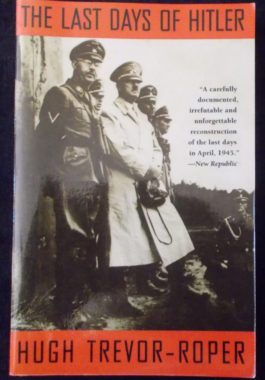 In September 1945, the fate of Hitler was a complete mystery. He had simply disappeared, missing for four months. The author, a British counter-intelligence officer, was given the task of solving this mystery. His brilliant piece of detective work not only proved that Hitler had killed himself in Berlin, but also produced one of the most fascinating history books ever written, telling the extraordinary story of those last days in the Berlin Bunker. Chapters include: Hitler and His Court; Hitler In Defeat; The Court in Defeat; Crisis and Decision; Siege of the Bunker. Et Tu, Brute. The Death of Hitler. Epilogue.
In September 1945, the fate of Hitler was a complete mystery. He had simply disappeared, missing for four months. The author, a British counter-intelligence officer, was given the task of solving this mystery. His brilliant piece of detective work not only proved that Hitler had killed himself in Berlin, but also produced one of the most fascinating history books ever written, telling the extraordinary story of those last days in the Berlin Bunker. Chapters include: Hitler and His Court; Hitler In Defeat; The Court in Defeat; Crisis and Decision; Siege of the Bunker. Et Tu, Brute. The Death of Hitler. Epilogue. -
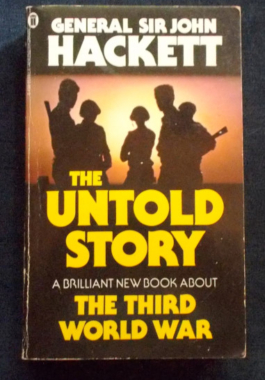 Hackett's first book, The Third World War: August 1985 sold 3,000,000 copies world wide and received great critical acclaim. This new book tells the rest of the story, using much new material, including declassified NATO reports and many hitherto unexplored episodes. It gives the inside story of how the war was planned in Moscow and experienced on the battlefield by the Warsaw Pact forces. Hackett re-examines his hypothetical scenario for World War III, incorporating the technological advances made in the four years since the publication of his first book.
Hackett's first book, The Third World War: August 1985 sold 3,000,000 copies world wide and received great critical acclaim. This new book tells the rest of the story, using much new material, including declassified NATO reports and many hitherto unexplored episodes. It gives the inside story of how the war was planned in Moscow and experienced on the battlefield by the Warsaw Pact forces. Hackett re-examines his hypothetical scenario for World War III, incorporating the technological advances made in the four years since the publication of his first book. -

The author has written the full length story of the Malayan campaign of World War II from the 'sharp end' of the fighting and as a prisoner-of-war, one of thousands who suffered for three years. He takes the reader through bewildering, disordered days and nights of fighting to humiliation at the hands of the Japanese, versed in all the arts of abasing and breaking prisoners by starvation and neglect. The illustrations by fellow prisoner Ronald Searle (St. Trinians, Down With Skool,Whizz For Atomms, How To Be Top, etc.) are poignant, forceful and make reality even more real. This really is war and imprisonment as it happened.
-

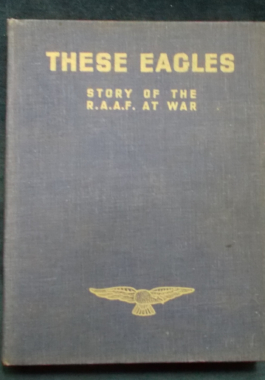 With stories, sketches and photographs from the servicemen and women of the Royal Australian Air Force. No 'Boys Own' adventures here - these are real tales of man's condition, actions and reactions in wartime. From Out Of Control: To watch Mother Earth rushing up to meet you while you are fighting a spine at a mere few thousand feet does not increase your expectation of a long and useful life... There's the ground crew blokes, the high-altitude men, the U-boat spotters, the Old New Contemptibles; the ladies of the W.A.A.A.F get a salute from the boys. There's even cartoons - such as one would expect from an Aussie view of things. Illustrated with sketches, black and white photographs and colour plates.
With stories, sketches and photographs from the servicemen and women of the Royal Australian Air Force. No 'Boys Own' adventures here - these are real tales of man's condition, actions and reactions in wartime. From Out Of Control: To watch Mother Earth rushing up to meet you while you are fighting a spine at a mere few thousand feet does not increase your expectation of a long and useful life... There's the ground crew blokes, the high-altitude men, the U-boat spotters, the Old New Contemptibles; the ladies of the W.A.A.A.F get a salute from the boys. There's even cartoons - such as one would expect from an Aussie view of things. Illustrated with sketches, black and white photographs and colour plates.




